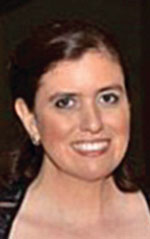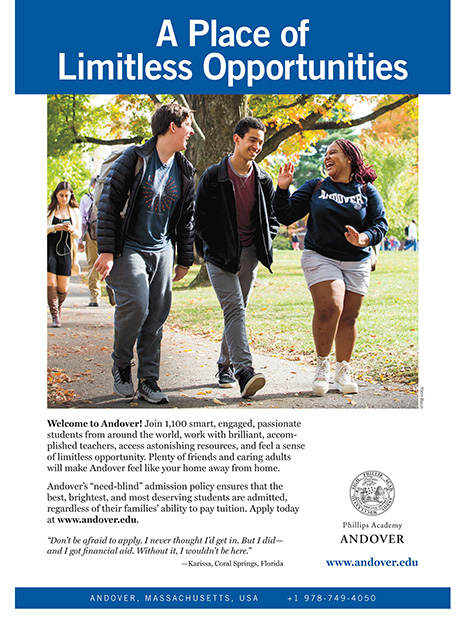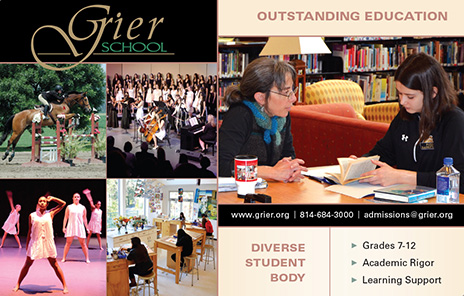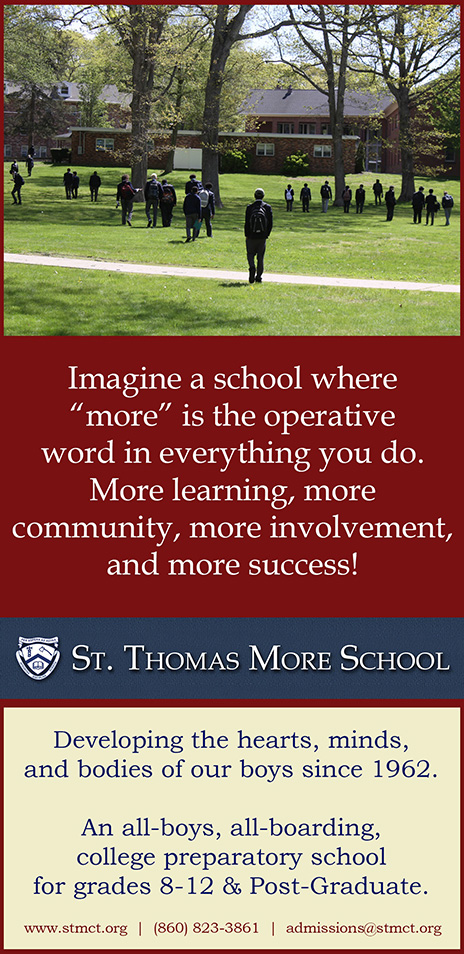Raising Multilingual Children in the Foreign Service
Raising children in more than one language is seldom straightforward and can leave parents second-guessing their approach. Here is a look at the challenges and how to meet them.
BY NICOLE SCHAEFER-MCDANIEL AND JENNIFER KIRK DINOIA
Online Resources for Multilingual Families
Bilingual Monkeys
bilingualmonkeys.com
Directory of Two-Way Bilingual Immersion Programs in the U.S.
www.cal.org/twi/directory
Fluent in 3 Months
www.fluentin3months.com
Linguistic Society of America—FAQ Raising Bilingual Children
www.linguisticsociety.org/resource/faq-raising-bilingual-children
Multilingual Children’s Association
www.multilingualchildren.org
Multilingual Parenting
multilingualparenting.com
TedTalk by Mia Nacamulli: The Benefits of a Bilingual Brain
ed.ted.com/lessons/how-speaking-multiple-languages-benefits-the-brain-mia-nacamulli#review
Half a century ago, linguists believed that encouraging children to speak more than one language would result in confusion and subsequent language delay. However, recent research has consistently demonstrated that not only is there no harm in exposing children to multiple languages, but that children raised in a bilingual environment may develop better problem-solving and creative-thinking skills.
Some researchers even argue that growing up with multiple languages may delay the onset of neurocognitive disorders, such as dementia, in old age.
This news is important for Foreign Service families, for whom raising children in more than one language has become so common that the Foreign Service Institute’s Transition Center has been offering a biannual course, “Raising Bilingual Children,” since the mid-1990s.
The Family Liaison Office reports that in 2016 there were 11,391 school-age children living overseas as eligible family members (EFMs) of State Department employees. Many of these children attend school in countries where English is not the primary language, some for a majority of their childhood.
According to the Office of Overseas Schools (OS), approximately 7,000 of these children were enrolled in a Department of State-assisted school. While English is the primary language of instruction at these schools, there are usually one or more additional languages offered as a part of the curriculum.
Foreign Service parents have unique opportunities to expose their children to multiple languages. Yet many struggle to find the best way to help their children acquire and maintain these languages as they move from post to post, each with differing levels of support and resources.
Approaches: What’s the Best Way?
Parents who choose to bring up their children with more than one language do so for various reasons. Some want their children to become global-minded citizens who can move between cultures. Some have a parent or other relative who is a native speaker of a language other than English, and want to pass on that language as a way of preserving their culture and heritage. Other parents see their children approaching fluency in the language spoken in the host country and want them to hold onto that skill.
There are three primary approaches recommended by linguists and parent experts:
One Person, One Language: Known as OPOL, this method involves assigning clear language roles to each person in the home. For example, one parent (or caretaker) may only speak Italian with a child, while another parent solely speaks English. Advocates attribute this method’s success to the clear separation of languages and to ensuring enough exposure, although supplementary resources and speakers may be necessary.
Minority Language at Home: In this approach, known as ML@H, the entire family speaks a minority language at home (i.e., a language that is not spoken by the dominant community outside of the home), even if neither parent nor caregiver is a native speaker.
For example, a family living in the United States speaks Spanish at home, while English is the majority language of the community and is spoken with everyone else. Sometimes referred to as “Foreign Home pattern,” this approach has many advocates. However, some children raised this way take longer to acquire the community language than children who grow up speaking solely the dominant language outside of the home.
Blended Approaches: OPOL and ML@H can be modified based on family context, composition and preference. For instance, some families choose to vary the context in which languages are used by speaking English in the home, but then sending children to a local school or an immersion school where classes are taught in another language.
Others vary language by day of the week or when they travel. These types of blended approaches are frequently used by Foreign Service families, since access to resources and languages greatly depends on where the family is posted.
Real Life Challenges & Frustrations
Despite the wide availability of online resources for parents wishing to raise children in more than one language, it is not an easy process, and Foreign Service parents often run into the same problems across the globe.
A big commitment. It takes hard work and parental dedication to stay focused on that second language when other languages are being used.
Johanna Vannett, the mother of two young girls, confesses that she often finds herself mixing three languages into one sentence: “During breakfast I will ask her ‘encore oder all done?,’ mixing German, English and French.”
Foreign Service parents have unique opportunities to expose their children to multiple languages.
Mom Heike Terrell, the mother of a now-adult and bilingual son, recalls the difficulty: “Since I’m bilingual myself, I naturally respond in the language that is used to address me. Whether English or German, it’s all the same to me. I found it difficult to switch back to German when my son responded in English.”
The effort it takes to keep up the chatter in a second language can be “exhausting,” says Ting Ting Wu, who wants to convey her native Chinese to her 3-year-old son.
“The community language is usually English for us expats. I find myself translating into Chinese what my husband says to [my son] in English, just so he can hear it, and pointing at things so I can talk about them in Chinese to him, when sometimes I would just like to sit.”
Sometimes children refuse to speak the minority language. Portuguese speaker Carla Reinisch Trunk says it’s a challenge to enforce the language with her 4-year-old daughter when everyone outside the house speaks English: “What’s her incentive?” she asks. “One weekend with her American grandparents, and she has defaulted to English.”
Lack of support. Some parents struggle when family and friends fail to understand or respect how they are raising their children.
Katherine Reilly, who is raising two bilingual children under age 10, says other parents warn her that her children “will have a speech delay,” and that I am causing them “unneeded stress.”
Parental lack of fluency. Parents also struggle when they can’t fully communicate in the second language or when they have limited resources.
Laura Paulus Guinn wants her children to speak Spanish. But, she says, “my Spanish isn’t good enough to really continue the foundation for both my children.” Still, she persists: “With the availability of cartoons in all languages on YouTube and multicultural friends, our children will always be exposed in some form.”
The father of two girls, Joseph Zadrozny also struggles with his lack of fluency. “As someone who grew up monolingual, I’ve tried to be as supportive as possible while recognizing that I have relatively little to contribute personally,” he says.
“The biggest burden falls to the minority language-speaking spouse. That person needs support and encouragement for it to be successful.”
There are numerous approaches for children to learn multiple languages, and no single approach is best for everyone.
Potential speech delay. Although researchers claim multilingual children develop their language skills at a similar pace as monolingual speakers, some parents say they’ve seen a delay in language acquisition.
“We definitely saw a big delay in speech with our second child,” says Catherine Pierce. “He was almost mute until age 3.” Despite the initial delay, Pierce says everything worked out in the end; her son eventually caught up and even graduated a year ahead of his class.
Yvette Hulsman had a similar issue: she remembers feeling “sad and frustrated” when her daughter’s speech was delayed. Ting Ting Wu’s son was also a late speaker, but eventually “he exploded into conversation and now talks about his day in French, Chinese and English.”
Keeping up speaking English. Parents whose children spend significant time away from English-speaking schools and countries may worry about their child’s English proficiency when they visit family in the United States or when children move back “home” to continue their education.
“My oldest son’s English can be hard to understand,” says Daya Stockdale, the mother of two boys under age 6. “We noticed that when we went back home and stayed with family. His Spanish, on the other hand, couldn’t be better; it’s full of colloquialisms and Mexican slang.”
Navigating a foreign school system. Parents who enroll their children in local school systems at post experience additional challenges as they attempt to navigate an unknown system in a foreign language.
“I only thought about school from the language point of view, but that’s really a small piece,” says Lisa Simmons, who enrolled her children at Liceo Franco Mexicano in Mexico City. “I do not speak the language of the school, and that has meant insecurity and unease with simple tasks like shopping for school supplies, school pick-up/drop-off, teacher communication, participation in school life and relationships with other parents.”
Ting Ting Wu agrees: “I spent a lot of time on Google Translate, trying to figure out school instructions, snacks and what exactly they did in school that week.”
Consistency across postings. Some parents worry that their children won’t be motivated to keep up an acquired language once they move to a new country with a different language.
“The major challenge for us is knowing we’re going to move every two or three years. Our youngest is currently in a German/Spanish nursery, but we only speak English at home,” says Molly McHarg, raising three children between 3 and 10.
Some parents struggle when family and friends fail to understand or respect how they are raising their children.
“We don’t have the resources to maintain two additional languages forever, but we’re hoping maybe she can continue with one at the next post. We figure the longer she has exposure to at least one, the better off she will be.”
Joanna Parys, a Foreign Service parent with a background in language education, suggests that parents consider the availability and resources of a minority language or foreign school system to ensure consistency from post to post.
Leah Moorefield Evans, a Foreign Service mother of four, points out that the French school system can be a good option for FS families, because there are French schools in 130 countries. “Transitions are relatively seamless,” Evans says, because “each grade teaches the same concepts, teachers are trained in the same way and the schools send all the records—you just leave school A and show up in school B.”
What Do the Experts Say?
Raising children in more than one language is seldom straightforward and can leave parents second-guessing their approach.
We turned to Nancy Rhodes, a world language education consultant at the Center for Applied Linguistics, and Marjorie Myers, Ed.D., principal of the Key School, a bilingual public school in Arlington, Virginia, for practical tips and advice on raising multilingual children. Here are some of their insights.
The earlier, the better. Experts uniformly advise that the earlier the second language is introduced, the better—from birth on is optimal—and that the maximum results are achieved before puberty.
There is no gold standard. There are numerous approaches for children to learn multiple languages, and no single approach is best for everyone. The best method is the one that works best for your family.
Remember that children go through phases in life, and will thus have different phases and preferences in their language learning.
Comprehension is key. Many parents want their children to achieve “balanced” language proficiency—that is, they want their children to speak and comprehend each language fluently. This is a difficult goal and will not be feasible for many.
Remember that it is acceptable to aim for less than fluency. The most important aspect of language learning is comprehension, because this is the foundation for language acquisition and future learning.
Parents whose children spend significant time away from English-speaking schools and countries may worry about their child’s English proficiency.
Be consistent. Expose children to as much of the minority language(s) as you can; experts recommend about 30 percent of daily language exposure.
Have the same language spoken by the same person or in the same context. Consider creating a “family language agreement” that outlines roles and responsibilities of each family member.
Interaction is crucial. Languages are best learned via natural social interaction, such as speaking and reading aloud. Constant narration—describing what is happening using both “I” and “you” sentences—is important for modeling correct language and grammar usage.
It’s normal to mix languages. Multilingual children will often “code-switch”—the term experts use for the tendency to mix languages, even in the same sentence. Don’t be alarmed when this happens. Some experts view this as a sign of language mastery.
Avoid power struggles. Never force children to speak a minority language. If they answer in the “wrong” language, continue talking in the minority language to increase exposure and to model language usage.
Get help. Stock up on resources like books, games and movies in the target language, and increase your network of speakers via playgroups, au pairs and nannies. If you are overseas, consider immersion and local school options.
Take the long view. Raising children who can speak more than one language is not a short-term venture; don’t expect it to happen in one short year. In fact, it may become a lifetime undertaking.
From Struggle to Success
With so many approaches to raising children in more than one language, parents will inevitably struggle with their choices. This is particularly the case for Foreign Service parents, since our choice of career means our children will be constantly exposed to different languages.
While the experts we spoke to provided valuable practical suggestions and reassurance, there is still a need for specific research on raising multilingual children in the Foreign Service.
Finally, FS families might also benefit from additional support. Even though FSI currently provides a few resources, such as access to language experts and a seminar on the topic, parents could also use financial support to cover educational expenses incurred to maintain minority languages, as well as assistance in finding local and alternative school options abroad.
To Learn More…
The State Department periodically offers “Raising Bilingual Children,” a tuition-free evening course designed specifically for Foreign Service parents. For information on the course, and to see an extensive list of available resources, go to bit.ly/BilingualFSKids.
Consider joining a Facebook group: Multilingual Foreign Service Kids is at www.facebook.com/groups/MultilingualFSkids.
Raising Bilingual & Multilingual Children can be found at www.facebook.com/groups/106547209394767.















